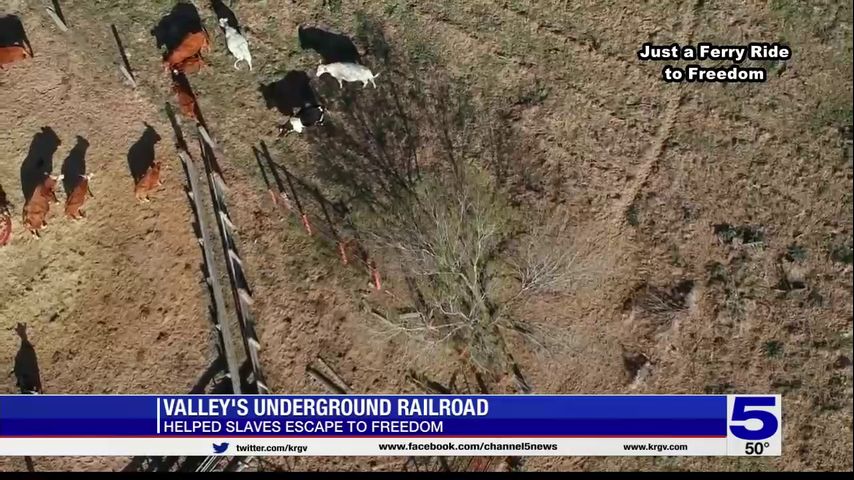UTRGV documentary highlights history of underground railroad in Rio Grande Valley
When we think about the underground railroad, we typically think of the dangerous route going north, but a local group of history experts is highlighting the Valley's role in helping slaves escape to freedom.
Experts say close to 10,000 slaves used beaten paths to escape to freedom through the Valley with the help of mixed-race families living along the Rio Grande.
But it wasn't easy. Slaves would have to trek across the Nueces Strip — a regional area between the Nueces River in Corpus Christi, the Rio Grande, and Laredo — by foot.
"Traveling through that is very uncomfortable and dangerous in the sense that there's lots of cactus, you would get pricked by the thorns on a cactus, you could be stepping on a rattlesnake or a scorpion," said Lecturer of Anthropology at the University of Texas Rio Grande Valley Roseann Bacha Garza.
Garza's part of UTRGV's Community of Historical Archaeology Project (CHAP) that created the documentary Just A Ferry Ride to Freedom, highlighting aspects of the journey and history of the Nueces Strip, known as a pathway to freedom. Some even refer to it as the Valley's underground railroad.
"Underground railroad-like activity through Texas into Mexico really is not the same as what we've been learning in our history books with regard to that type of activity going north," Garza said.
The underground railroad-like activity going through the Valley had many conductors, in fact, a community.
Maria Hammack, a PhD and history professor at the University of Pennsylvania, says slaves traveled through the Nueces Strip because they knew once they arrived in Mexico, they would be totally free, unlike in Canada.
"There were instances where Canada, Canadian authorities were returning people back to U.S. slavery," Hammack said. "Mexico continuously refused to sign an extradition treaty,”
While this is just a small part of a much bigger story of the Nueces Strip and slavery in South Texas, Garza and Hammack both say it’s important to highlight this because of the impact it has today.
“iIt will help challenge anti-blackness not only on the U.S. side in Brownsville, in the Valley, but on the Mexican side as well,” Hammack said.
Watch the video above for the full story.




